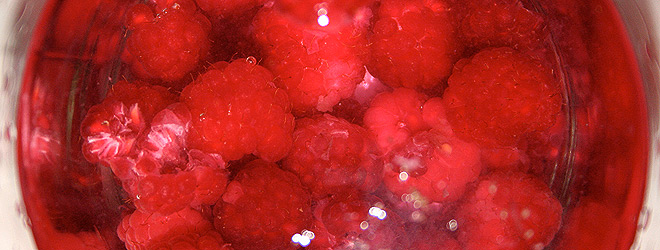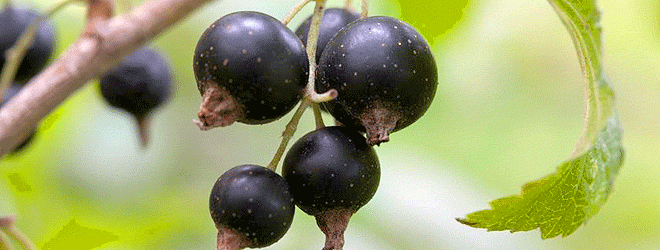Winter is a great time to be a lazy gardener. The growing grinds to a halt – weeds and all – and there’s nothing much to do until spring is on its way.
But on occasions, even in winter, we’ll need an excuse to get out of the house* and there are only so many logs that need chopping. For those moments it’s the soft fruit that usually receives our attention.
Like most of us, winter is the soft fruit’s dormant period. New bushes should be planted during this inactive spell and there’s work to be done with existing plants. Here are five soft fruit tasks we’ll be performing in good time for the arrival of spring.
Hack back autumn raspberry canes
There are two types of raspberries: those that fruit in summer, and those that hang on until autumn. The summer varieties (including ‘Malling Jewel’ and ‘Glen Ample’) need a little care when pruning; autumn’s canes (such as ‘Autumn Bliss’ and ‘Polka’) simply need hacking to the ground during winter. Guess which we prefer? We’ve abandoned all summer raspberries, opting for the easy life instead. So in January or February we’ll roam among the bare canes with secateurs, snipping each one of them at the base. Job done.
Prune soft fruit bushes
Unfortunately, pruning soft fruit bushes needs a little more attention than the razing of raspberry canes, but unless you’re a perfectionist it doesn’t need to be as complicated as some guides will make out. Our established gooseberry and blackcurrant bushes will feel the thrust of a pruning blade this year, with the starting point for both being to remove damaged or diseased branches.
We then have a divergence of tasks: the plan for the gooseberries is to cut out a few of the older stems, allowing space for new ones to power through this year, and make sure we leave in place a mix of stems that are one to three years old. These will then be chopped back to half their length.
The blackcurrants are a little different in that fruit will only appear on the stems that grew during the summer just departed, so we’ll say goodbye to the older ones.
Finally, both bushes will be thinned a little if there is any overcrowding going on.
In reality we’re just as likely to chop all of our soft fruit at random… and the chances are they won’t suffer much as a consequence.
Mulch with garden sweepings
Over the course of winter the garden will gradually turn into what some observers might class as “a state of untidiness”. We like the general unattended decay and so does the wildlife. But every once in a while even we cave into pressure and gather up unruly clumps of fallen leaves and collapsed flower stems.
Rather than shovel this goodness straight into the compost, much of this garden matter will be scattered around the soft fruit plants with any bigger pieces being first broken up. Here their continued decay will slowly feed nutrients into the roots, ready for the spring growth, and they’ll provide a layer of warmth and protection to give the plants a leg up later in the year. And those friendly soil-enhancing bugs are more likely to set up home in their vicinity.
Remove and mend the netting
The vigorous growth of our blackcurants have led to a few branches bursting through the protective netting. Careful removal is required to avoid damaging both the bushes and the nets but, inevitably, holes will be expanded.
Although we won’t be putting the netting back up until the fruit has set, now is the perfect time to mend any holes and replace any bits beyond repair. We take a lot of care over this particular task: half arsed netting can allow animals to sneak their way in, or get trapped in untidy net overflow, and perish. And when you’ve got a million other gardening jobs to fulfil in summer, fighting with sheets of netting isn’t much fun.
Take hardwood cuttings
Fancy some free fruit bushes? Then use nature’s powers of multiplication to propagate new plants from old wood. We’ve not tried this before but it looks easy so this winter we might just give it a go.
Here’s what we’ll do…
We’ll snip off some hardwood stems. Pencil thick, the experts say. We’ll then trim these into 25cm-ish sections with a bud at the top and bottom of each section. We’ll fill a big pot with soil and plant these sticks 10cm deep at a similar distance apart.
And apparently that’s it until next winter when planting them out will be added to our list of soft fruit winter tasks.
*Phrases like “isn’t it time you sorted out your booze collection” usually send us scuttling to the back door
Note: Yes, they are strawberries growing in the photograph. In winter. Seasons, huh…
This is a sponsored post








I think your spell-checker has been too agressive, or possibly sponsored by the Post Office.., The raspberry is Malling Jewel, nothing to do with Mailing 🙂
Ah, thanks for spotting that. It has been corrected.
The guilty party has sent to the tower and will not be receiving their raspberry rations this year.